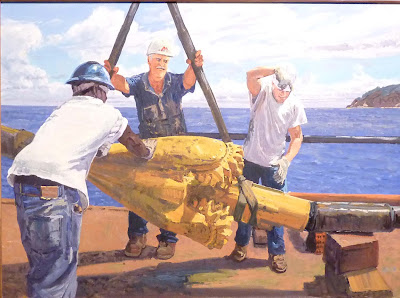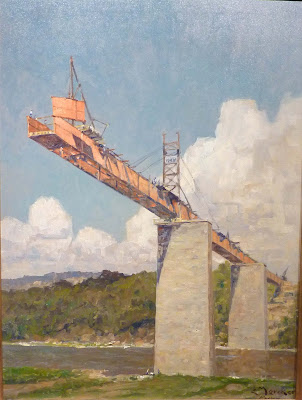Antiques Fair 2012
I can't tell if the Chicago Antiques Fair is getting worse, or if I'm getting harder to please, but this year's edition was a big disappointment.
I couldn't even find any Tang Dynasty sculpture that I liked.
But the above small work on paper was a like a breath of fresh air.
Louis Oscar Griffith (1875–1956)
Since this Midwestern painter was a member of my art club, I've followed Griffith in these antique fairs for many years.
Louis Oscar Griffith
This painting actually did have this weird greenish color which is not especially pleasant
But unlike most of the other figures paintings in the fair, it felt like an artist exploring the world instead of trying to produce a marketable item.
Here's another Chicago painter who also seemed to be exploring the world as he saw it and could recreate it.
He worked as a sign painter and then a commercial artist.
Raymond Perry Rodgers Neilson, 1927
I really like this NYC portrait painter who would have painted Daisy and Gatsby if they weren't just fictional characters.
20th C. American professional portrait painters like him have been badly neglected by American art museums Whitney Hoyt
Not much is known about this painter of moody cityscapes, so he must not have had much of an art career.
I like those black rectangles that appear at various depths into the picture plane, there's something so ominous about them.





































































